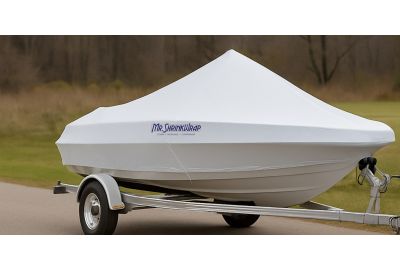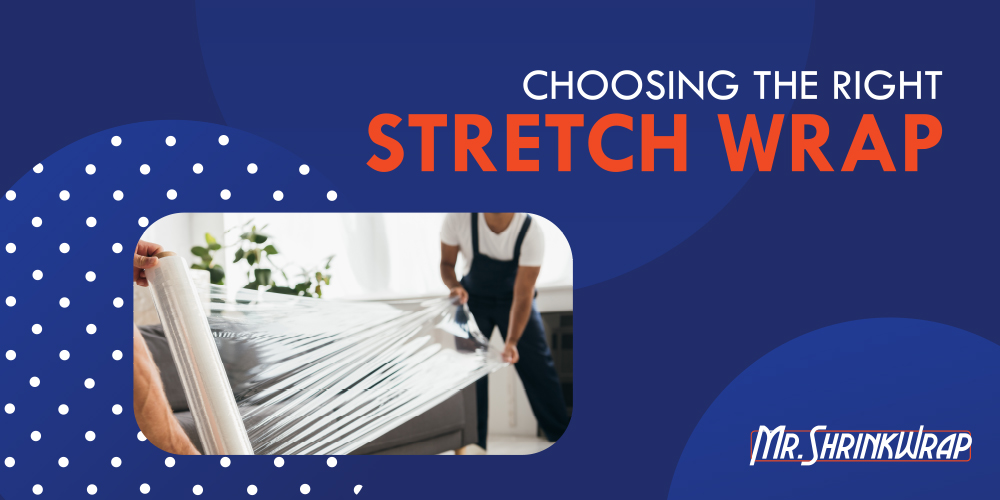For any industrial, construction, or commercial application, Mr. ShrinkWrap specializes in offering on-site shrink wrapping services across the US and overseas. Our professionals offer shrink wrapping services in a variety of applications, using tried-and-true techniques and outstanding plastic shrink wrap of extraordinary strength and longevity.
Shrink Wrap Services
Boat Shrink Wrapping Service
Mr. ShrinkWrap offers on-site boat shrink wrapping services throughout Pennsylvania, Delaware, and Maryland, as well as occasionally in bordering states. You can count on us to finish all on-site work in 7–10 days once the boat is prepared for wrapping.
As part of our standard services, we wrap the boat down to the waterline to ensure even coverage on the hull, and we thoroughly ventilate it using a variety of shrink wrap vents in various locations throughout the boat, paying particular attention to peak areas where water vapor and condensation are likely to collect. Zipper doors are an extra-cost option for boat owners who want access to the interior of the cover while it is wrapped.
We take pride in being one of the first shrink wrapping businesses in the U.S. with a 25+ year history. These years of experience have allowed us to perfect our methods and products. From wearing booties on your yacht to us taping every last heat sealed seam, we pay attention to every last detail. We make sure to care of the specifics, including wrapping around flexible windshields with caution, avoiding strain on radar and antenna equipment, and building a framework that will consistently shed rain, withstand wind, and wrap down to the waterline.
Contract Packaging & Co-Packing Services
For the purpose of streamlining the value chain for our clients, Mr. Shrinkwrap provides “Contract Packaging” or “Co-Packing” services. We pack the goods that you require in bundles, multi-packed packages, or individually wrapped using our in-house sealers, heat tunnel machinery, and premium film. We have the capacity to receive and organize all of your goods so that you may quickly complete your project. We specialize in small batch services.
Using a “Contract Packaging Service” has a lot of advantages. Working with a contract packaging service ensures that the cost per unit for your company is competitive from the start. By hiring us as a contractor, you can also avoid incurring significant startup costs and learn important details about the project's scope, schedule, and prospective training or labor expenditures. When making future plans and keeping in mind the financial health of your organization, this kind of information is highly helpful. Additionally, by utilizing our own equipment, you will free up space in your building.
Our “Contract Packaging Service” will make sure that your products receive the care and consideration they require. Throughout the packing process, we verify and double-check machine parameters and output quality. When a product's packaging isn't exactly how we want it to be, we remove it and re-wrap it until it satisfies our requirements for quality. We place a premium on accuracy and have high standards in that area.
Industrial Shrink Wrap Services
The industrial market is well served by Mr. Shrinkwrap's expertise in industrial shrink wrap services. In every application, safety comes first, followed by safeguarding your belongings while they are being shipped or stored. We can install a custom shrink wrap cover that will perform to the highest industrial requirements using the appropriate materials and tried-and-true installation processes in various circumstances when you need to protect a large item in shipping.
We can assist you with keeping manufacturing items safe during transport or outdoor storage. We protect your completed product from fading and damage caused by lengthy outdoor storage by providing specialized applications such as zipper doors, corrosion control, and ventilation products.
Residential Shrink Wrap Services
Use shrink wrap to protect your outdoor furniture throughout the winter. Outdoor shrink wrap products and shrink wrap services from Mr. Shrinkwrap will help you safeguard your investment from damaging UV rays and keep your outdoor furniture looking tidy when it's time to store it. Our on-site service team can shrink wrap any outdoor furniture that needs to be protected from the elements, including chairs, gazebos, outdoor kitchens, and tables. We are delighted to offer on-site shrink wrapping services anywhere in the tri-state region of Southeast Pennsylvania, Delaware, and Maryland, whether it be at your residence or a dry storage facility.
Transport & Shipping Shrink Wrap Services
The preparation of substantial, frequently oversized, loads for over-the-road, rail, and marine transit is Mr. Shrinkwrap's area of expertise. Our service teams have used industrial quality shipping shrink wrap to protect and conceal some of the most delicate and priceless objects that travel the roadways, including items being shipped as far away as Japan and frequently across the nation. Our technicians are qualified to operate in any US transportation-related institution, have had their backgrounds examined, and are experienced, background-checked, and prepared to travel abroad. Shrink wrapping gives products a neat appearance that inspires trust that they will arrive without damage from road grime or other occurrences. Large or bulky things can be packaged economically and attractively by shrink wrapping them. Shrink wrapping can be done with pallets, crates, or even on a flat-bed truck and takes less time than traditional methods.
Building / Scaffolding Shrink Wrap & Temporary Walls
Mr. ShrinkWrap offers shrink wrap services that can improve the timeliness of building projects and the preservation of property. One solution we offer in this field is “Scaffolding Shrink Wrap Containment,” which allows work to continue even in poor weather by enclosing scaffolding. Another service we offer is referred to as "Entire Building Shrink Wrap," which offers a higher level of climate control and enables work to proceed through bad weather. Some businesses may find that a service called “Temporary Walls & Partial Building Containment" is more fitting for their project. This service uses shrink wrap partition walls, ceilings, or full enclosures to enable the ongoing use of areas nearby construction, restoration, or environmental cleanup projects.
Transportation or Storage Shrink Wrapping for Large Items
When carrying flatbed truckloads of any kind of sensitive item, the state of the finished product upon arrival depends greatly on the cover and the preparation of the item for road transportation. Mr. Shrinkwrap offers goods and/or shrink wrapping services that can help you coordinate the packaging of your goods with your company's core principles, and improve you company's first impression when customers see your goods. Large objects or bulky items can be packaged attractively and affordably by shrinking wrapping them. The shrink wrap procedure takes less time than traditional methods and can be applied to flat-bed trucks, pallets, boxes, and other items.
Why Choose Mr. Shrinkwrap's Services?
The secret of our wrapping service lies in our nearly two decades of experience in identifying our clients' needs for protection. Our staff can suggest the best application approach to satisfy those needs after the variables of size, duration, mobility, and accessibility are determined. The premium shrink films that we use offer a superb protective layer around an object when they are correctly applied by our trained staff.
Our teams are dependable and receive safety training along with drug testing. Mr. Shrinkwrap technicians and supervisors have TWIC cards for access to ports and other high-risk locations. They have also been trained to enter any US nuclear plant, with their training documented in the PADS systems.
Request a Quote
Why not get in contact with us today to see how shrink wrap services by Mr. Shrinkwrap can help your company? Our experts are happy to help you find the ideal solution for your professional shrink wrap service needs. Give Mr. Shrinkwrap a call at 800-847-5290 or request a custom quote for your shrink wrap service, today!






